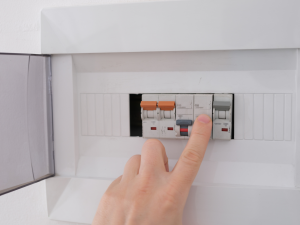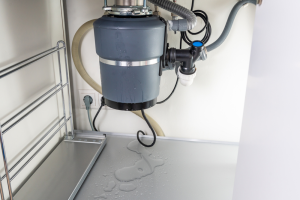How are your energy bills? Do they keep soaring by the day? If so, this might be because of your HVAC system.
But what would you do if this was the case? Staying without a heating system certainly isn’t an option, especially if you come from one of those areas that can get pretty cold.
But not to worry. A hydronic heating system can be an excellent solution to your heating and energy bills problem. It is significantly energy-efficient and a better choice compared to its air-pushing counterparts. In addition, its maintenance is minimal.
But before you make that final decision, here are a few things you need to know.
What is a Hydronic Heating System?
Instead of heating and blowing hot air throughout your home, a hydronic heating system heats a liquid (mostly water), distributes it through tubes, and radiates the heat all over your home. A hydronic heating system can be installed on floors or using baseboard heaters to distribute heat.
Granted, water is a better conductor of heat than air, and less energy is used to heat the water and move it throughout the house. Water also retains heat for a long time, and the system doesn’t have to keep turning off and on to maintain the warmth.
Pocket-wise, a hydronic system can save you up to 40% off your heating bill. Other benefits of hydronic systems include warm floors, no noise, bearable humidity levels, and the ability to control which rooms to warm.
Types of Hydronic Heating Systems
There are many types of hydronic heating systems. Some systems use water to heat the house, while others use another liquid like antifreeze. In addition, some systems have a storage tank where the boiler heats the water before distribution, and others heat water straight from the source without a tank.
That said, we will discuss three types of hydronic heater systems from the heat exchanger or heat delivery angle.
1. Radiant Floor Heating
With radiant floor heating, heat is supplied directly to the floors or the ceiling. The heat is carried by either water-heated tubes or electrically heated coils. The system requires a thermostat to control how much heat you get, and you can switch off the heat supply in some rooms.
Radiant floor heating is energy and space-efficient, and it requires zero maintenance once installed. However, the installation cost is quite steep because it’s complicated, and the system can take more than 30 minutes to heat up the home.
2. Radiator Heating
Radiators are also called hot water heaters. They are the oldest form of hydronic heating. They usually use a boiler to heat the water, which is sent to the radiator. The radiator will then release the heat from the water, as steam, which warms up your home.
Radiators are quite energy-efficient, long-lasting, and require less maintenance. However, the radiator can get hot and pose a fire risk if positioned near drapes or furniture.
3. Baseboard Heating
These kinds of heaters work a lot like an AC unit. They sit somewhere in your home, pull in cold air from the atmosphere, then warm it by pushing it through some metal fins. The fins are electrically heated, which in return heats the air passing through.
The heater is usually installed underneath a window while pipes go along baseboards or inside walls and floor joists. Since the pipes don’t have to cover the entire surface area of a room, the system requires less tubing than the radiant system.
Unlike radiant floor heating, baseboard heating is easy to install and cheaper. However, it has one drawback. It might not be the best option when it comes to cost-effectiveness. This is because it consumes a lot of energy to heat the home.
Components of Hydronic Heating System
The parts of a hydronic system will depend on the design or type of the system. For example, some systems have a boiler and a water tank while others do not. However, regardless of the type, most hydronic systems have the following components.
- Furnace. The furnace heats the liquid before it’s distributed throughout the home. The furnace is a boiler most of the time, but it can also be another heat source.
- Heat distribution devices. Depending on the type, heat can be distributed using radiant floors and ceilings, radiators, and baseboard convection units.
- Circulating pump. The circulator pushes the hot water from the boiler and into the piping system. Depending on the configuration, one system may have more than one circulator used to pump water to different zones in your home.
- Zone valves. With hydronic heating systems, you can create zones to avoid heating unoccupied rooms. Instead of using different circulating pumps, zone valves work better to control heat distribution using the thermostat.
- Heat exchanger. A heat exchanger transfers heat to the water or liquid used in the heating system.
- Piping. The hydronic heating system consists of pipes made of copper, steel, iron, rubber, or plastic to distribute heat. These pipes are insulated to prevent loss of heat.
- Thermostat. The thermostat controls the heating system by turning it on or off and also controls the temperature.
Dos and Don’ts of Using Hydronic Heating Systems
A hydronic system requires far less maintenance than other types of heating systems. However, you still have to follow a few rules to ensure it’s working properly when winter comes around.
Dos
- Get professional maintenance periodically. A few components like the boiler and the radiator need to be checked monthly and maintained regularly. Don’t be tempted to do the maintenance yourself. A professional knows what to look for and what to do if anything is wrong with the system.
- Use a good cleaner. There are cleaners made specifically for hydronic heating systems. They help maintain the PH balance within the system and stop corrosion and calcium deposits. Use only the recommended cleaners.
- Know the system. The internet is the first place you should go to learn all about hydronic systems. Learn everything you can about how different types of hydronic heaters work and their maintenance.
Don’ts
- Don’t install the system yourself. Some hydronic systems seem quite easy to install. However, doing it yourself can lead to a host of ongoing issues. Instead, have a professional install the system for you so they can do it right once and for all.
- Don’t stall on the maintenance. It’s easy to put off or even forget monthly maintenance. Put a reminder on your phone or calendar to ensure this doesn’t happen. Regular maintenance will prevent costly repairs in the future.
The world at large is considering more environmentally-friendly options when it comes to heating and cooling homes. If you are considering a hydronic system for your home, you will be supporting the move to sustainability. Schedule an appointment if you want to consider installing a new heat pump.




